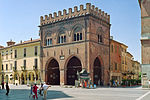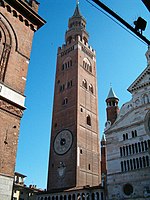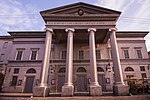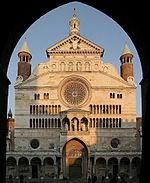Cremona Baptistery

The Cremona Baptistery (Italian: Battistero di Cremona) is a religious edifice in Cremona, northern Italy. It is annexed to the city's Cathedral. Built in 1167, it is characterized by an octagonal plan, a reference to the cult of St. Ambrose of Milan, symbolizing the Eight Day of Resurrection and, thenceforth, the Baptism. The edifice mixes Romanesque and Lombard-Gothic styles, the latter evident in the preference for bare brickwork walls. To the 16th century restorations belong the marble cover of some walls, the pavement and the baptismal font (1531) and the narthex (1588) of the entrance, in Romanesque style, work by Angelo Nani. The interior has a 14th-century Crucifix, over the St. John altar, and two wooden statues portraying "St. Philip Neri" and "St. John the Baptist" by Giovanni Bertesi. Over the ceiling is a 12th-century statue of the Archangel Gabriel.
Excerpt from the Wikipedia article Cremona Baptistery (License: CC BY-SA 3.0, Authors, Images).Cremona Baptistery
Piazza del Comune, Cremona Centro Storico
Geographical coordinates (GPS) Address External links Nearby Places Show on map
Geographical coordinates (GPS)
| Latitude | Longitude |
|---|---|
| N 45.133113888889 ° | E 10.025072222222 ° |
Address
Battistero
Piazza del Comune
26100 Cremona, Centro Storico
Lombardy, Italy
Open on Google Maps








